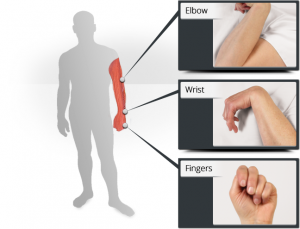empowering the severely brain injured and their families via support, understanding and a network of care
Spasticity
What is Spasticity?
 Spasticity is a condition, in which muscles stiffen or tighten, they remain contracted and resist being stretched.
Spasticity is a condition, in which muscles stiffen or tighten, they remain contracted and resist being stretched.
This is very common in people who have suffered a severe brain injury and generally effects both upper and lower limbs.
It is generally caused by damage to the area of the brain and spinal cord that are responsible for controlling muscle and stretch reflexes. The brain may cause the muscles to become stiff, overactive and difficult to stretch, they may also ‘spasm’ or tighten suddenly.
Following a severe brain injury the onset of spasticity is rapid, beginning as early as one week following the injury. Treatment is absolutely necessary, however as often is the case, the patient is too poorly and treatment is left for a later date.
There are many treatments used to manage spasticity, including medicines, casting, splints and stretches. Often, these treatments are used in combination with each other.
Non Surgical Treatments
Physio Therapy – The muscles in the body are in constant communication with the brain. Following a brain injury the proper motor signals are not getting through. As a result the affected muscles ‘contract’ in order to protect themselves. A physio therapist will use certain excercises to stretch and strengthen these muscles and hopefully start the process of re-wiring the muscle movement to the brain.
Splinting, casting or bracing – will prevent involuntary spasms and reduces the tightening of muscles and keeps the limbs in the proper position.
Oral Medications
Medication can help control spasticity but may have side effects. Common side effects such as sleepiness might be more intense after a brain injury.
The following medications may be prescribed, however Baclofen is the most commonly used medication for spasticity:
Botox Injections
These can be used to paralyse the spastic muscle, preventing it from contracting. In small amounts, Botox is injected into carefully selected sites based on the spasticity. Unfortunately, the benefits of the injection are temporary and only last up to 12-16 weeks. After receiving the injection, regular stretching of the muscle is necessary for it to be the most effective.
Whilst Botox can be very helpful there is a limited number of injections that can be administered.
Surgery – Intrathecal Baclofen (ITB) Pump
A Baclofen Pump (a small hockey-puck sized device) can be surgically placed in patient’s abdomen that will release tiny amounts of Baclofen into the space around the spinal column. This allows for a significant reduction in spasticity and pain. This procedure is only done in extreme cases and as with any medication, should be followed up regularly by the neurosurgeon or doctor.



